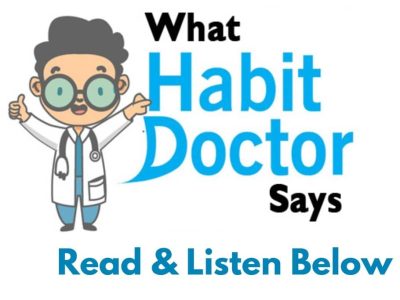Making decisions and choices is an inevitable part of life. Simply put, the way life unfolds—with all of its twists and turns, starts and stops—requires us to make decisions and choices at every turn. As a result, I find it fascinating and perplexing why many young individuals have not mastered the skill of decision-making by the time they reach adulthood. Many individuals fear change because it implies they’ll have to think about something different than they’re used to, and they may even be forced to change.
Why is this the case? Well, there could be a variety of causes, a variety of elements that explain why some individuals can jump right into life and do what is required with enthusiasm and joy, while others are paralysed by the prospect of having to take action. The way a person views life may be influenced by their temperament, disposition, or nature. Some people are fearless, relishing risk and adventure, while others are averse to change and making mistakes, preferring to stick to what they know and avoid going too far afield—this includes their choices and decisions.
Some people have been burnt in the past by poor choices and decisions, and they are terrified to make the same mistake again. As a result, individuals may do nothing in the hopes that the change will resolve itself, or that someone else will take care of what has to be done.
Then there’s the problem of youngsters never learning to make decisions because they’ve never been taught how; many crucial decisions have been made for them, and they may simply have no voice in the matter. That could be the fault of parents who try to control too much of their children’s lives for fear of missing out on what they, the parents, consider to be important unless they, the parents, intervene to ensure their children’s “correct” course.
The final line is that we all need to improve our decision-making skills. This crucial life skill should be taught from an early age, as mastering decision-making takes years of practise. A person’s developmental stage/age, having a general idea of right and wrong (and I mean this in the broadest moral sense because individuals may develop their own idea of what is right and wrong for them personally as they mature), understanding what the decision-making process entails, and practise are all factors in learning how to make good choices and wise decisions.You may believe that starting with infants is inappropriate, yet this is not the case.
Reinforcing conduct that is inappropriate or potentially dangerous is a good idea. When a baby starts crawling and comes across small things or dirt on the floor, it’s important to not only remove the object but also to say “no” and explain why putting it in their mouth isn’t a good idea. Even if a kid doesn’t grasp what you’re saying at first, by hearing it often, they’ll begin to see the connection and realise that all behaviours have consequences—some good, some terrible.
Toddlers require a limited number of choices. Provide the child with only two options, for example. “Would you prefer cereal, eggs, milk, or juice?” “Would you like to wear this dress with leggings or this green top with these blue pants?” This gives the child a say in making decisions that are in line with their preferences and routine.
Provide fair and accessible choices/options for young children; tasks should not be outside their developmental range. Create tiny jobs for your child to do alongside you, such as dusting the furniture, adding an ingredient or two to a recipe, shopping for groceries, and so on.
- Allow your child to try when they reach the stage of “I can do it myself,” under your supervision and observation.
- Allowing the youngster to do some chores/jobs on their own, such as picking up their toys or feeding the household pet, promotes responsibility.
- Break down chores into smaller chunks or steps to demonstrate to children that things happen in a certain order.
- Encourage your youngster, especially if he or she is frustrated or losing patience.
- Praise and congratulate them on a job well done, especially if it involves learning a new skill such as dressing themselves, riding a bike, or keeping dry all night.
- Increase the number of options available to pre-schoolers. As a youngster grows older, so does his or her ability to understand the subtle differences between good and wrong, as well as the consequences of their actions.
“Do you believe this is a good idea/decision/choice, or maybe not the best?” “Do you think this is a good idea/decision/choice, or maybe not the best?” Have you come up with a better concept or desire to make a new decision/choice?’
“What do you think will happen if you decide to do ?” “What do you think will happen if you decide to do ?” “How do you think you’ll feel if you do ?” “How do you think they will feel as a result of a choice you make?” you can ask the child if doing something includes someone else, such as a sibling or a friend.
When making family decisions, consider your child’s thoughts or opinions. The youngster will feel heard, their viewpoint will be valued, and their ability to express themselves will be cultivated. They will also begin to recognise that decision-making involves a process.
Increase the number of options you give school-aged children and the importance of the decisions they make. This includes their activities, friends, school curriculum and educational obligations, as well as personal choices like when to sleep, what style of clothing to buy, and the pursuit of personal interests like music, movies, and books, as well as the pursuit of special talents and creative abilities like sports and art. Of course, as an adult, you can still make a lot of crucial decisions about your children, but it’s critical to allow them the opportunity to learn on their own.
Teach people how to make decisions.
- Define the problem. Include the decision’s need/reason.
- Consider several options and/or solutions.
- Discuss the many possibilities and their potential ramifications before settling on no more than three options.
- Choose one of the three options, create an action plan, and carry it out.
- Assess the solution. Your child will feel a sense of accomplishment if the solution is satisfactory. If it is not satisfying, if it falls short of expectations, or if it is simply a bad concept, investigate other options/possibilities that may result in a better result.
- Make yourself available to your child to talk about any challenges or problems that arise as a result of a decision, as well as to encourage and support them, especially if they make a terrible decision. Making poor decisions is an inevitable part of growing up.
Teenagers and young people should be encouraged to make more decisions and choices. Recognize that adolescents desire greater autonomy in their life. They want more freedom, more time with their pals, and more enjoyment. Encourage your adolescent to exercise decision-making skills on his or her own whenever possible, while you sit on the sidelines. When you continue to make crucial choices and decisions for your child on your own, you are undermining his or her self-esteem and confidence. Nobody expects someone to get everything right all of the time. We don’t always do so. However, having a general notion of what to do will make important judgments and choices easier. One of the most crucial life skills to have is the ability to make good decisions.



A valuable resource for building better habits. I’ve shared these articles with my support group